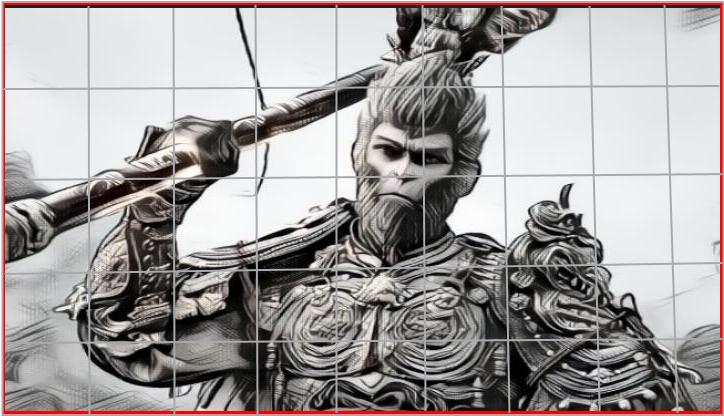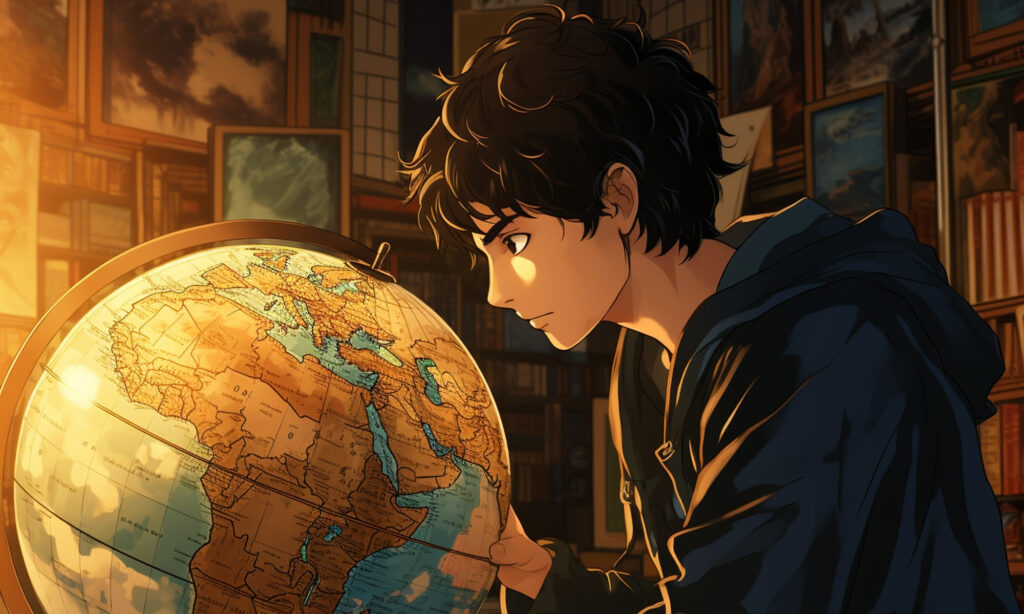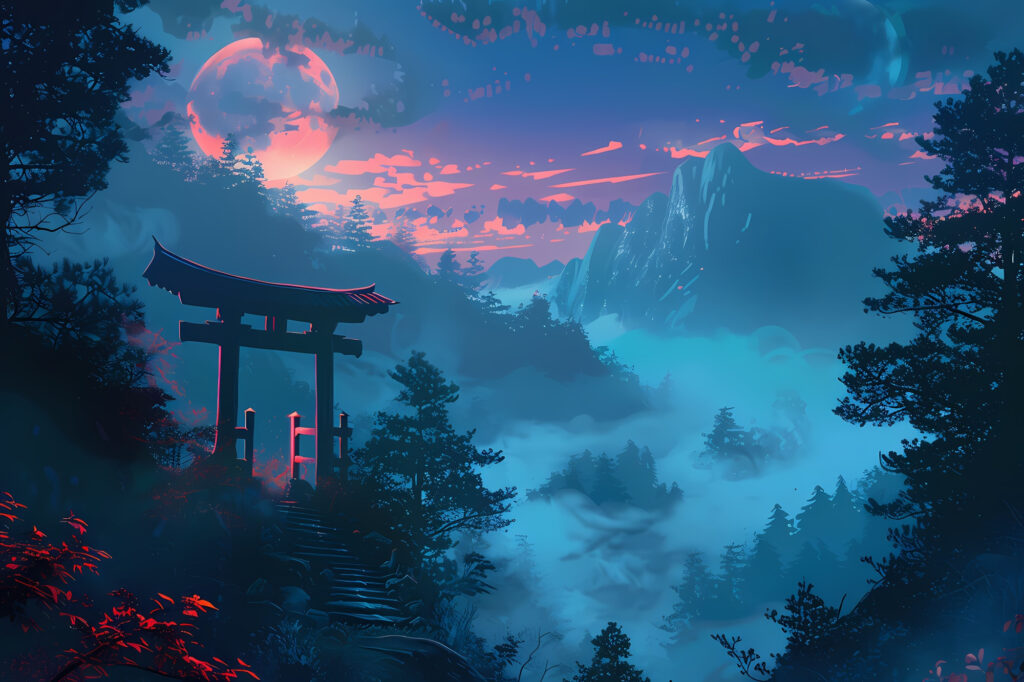Whether you’re just starting out or have been drawing anime for years, there’s always something new to learn. Anime art is an amazing blend of creativity and technical precision, and even the best artists constantly refine their skills. It’s one of those styles that looks deceptively simple on the surface, but when you dig deeper, you realize just how much thought goes into every little detail. Whether it’s the expressive eyes, intricate hairstyles, or fluid dynamic poses, there’s always something fresh to master, no matter your skill level.
In the world of anime drawing, it’s easy to get overwhelmed with the sheer variety of styles and techniques, especially when you scroll through social media and see artists producing mind-blowing artwork. But here’s the secret: every great artist started where you are now, and the key to improvement is simply breaking things down into manageable steps.
This guide will walk you through easy-to-follow tips that can help you level up your anime drawing game. We’ll cover everything from mastering basic facial features to capturing dynamic poses that bring your characters to life. And don’t worry-we’ll keep it light, fun, and throw in some useful tricks along the way, also introducing you to a handy digital tool that will make your art life a lot easier.
So, grab your pencils or your stylus, and let’s dive into the world of anime art with some fresh techniques to help you get better-no matter where you’re starting from!
1. Study Different Styles
Anime isn’t just one style-it’s a whole range of artistic expressions. From the bright and bubbly worlds of Sailor Moon to the dark, moody atmosphere of Attack on Titan, there’s a wide spectrum to explore. The first step in improving your anime art is to study the work of your favorite artists. Break down what you love about their styles. Are the eyes super detailed? Do they exaggerate facial features or focus on realistic anatomy?
Once you understand what draws you to certain styles, incorporate those elements into your work. But remember, don’t just copy-experiment! Mix and match styles, and before you know it, you’ll have developed your own unique artistic voice.
Pro Tip: Keep a sketchbook specifically for studying anime styles. Fill it with quick sketches, breakdowns of eyes, hairstyles, or poses. It’s a great way to see your progress over time!
2. Start with Basic Shapes
Before you dive into drawing your next epic anime character, pause and think about structure. Drawing is like constructing a building-you need a solid foundation before adding the details. Starting with basic shapes like circles, squares, and triangles can help you map out your characters.
For example, use an oval for the head, lines for the spine and limbs, and rectangles for the torso and hips. By doing this, you ensure that your character’s proportions are correct before diving into the intricate details like hair, clothing, and accessories.
Think of this as your blueprint. Once the framework is laid out, you can confidently build upon it with details, knowing that the foundation is solid.
3. Master Facial Features (Eyes, Nose, Mouth, Ears)
One of the most defining elements of anime is the exaggerated facial features, particularly the eyes. Anime eyes can range from huge, sparkly orbs to more narrow, serious gazes. But no matter what style you choose, mastering facial features is key to capturing your character’s emotions.
Start by focusing on the eyes. Eyes are often the most expressive part of an anime character, and there are countless ways to draw them. Practice drawing different eye shapes, sizes, and expressions. Happy characters tend to have larger, rounder eyes, while more sinister or serious characters often have narrow, angular ones.
The nose, mouth, and ears may not be as prominent, but they’re equally important. Anime noses are usually simple lines or dots, but they still need to be placed correctly. The mouth varies from a small curve for a smile to a large, open shape for surprise or shouting. Ears, though often covered by hair, should be aligned with the eyes and nose for proper anatomy.
Experiment with different expressions. Can you make your character go from happy to sad with just a few adjustments to the eyes and mouth? Practicing expressions will help bring your characters to life.
4. Experiment with Hairstyles
Hair in anime is not just about style, it’s a storytelling element. A character’s hairstyle can tell you a lot about their personality. The cool, confident character might have spiky, rebellious hair, while the shy, reserved one might have long, flowing locks. Anime hairstyles are often exaggerated, and that’s what makes them so fun to draw.
Start by practicing simple hairstyles and then move on to more complex designs. Don’t be afraid to experiment with wild, gravity-defying styles! Hair doesn’t have to behave like real hair in anime, so you can get as creative as you want. Try different lengths, textures, and accessories, like headbands or clips, to make your characters stand out.
Tip: Keep a reference folder of different hairstyles that inspire you. Try drawing your character with multiple hairstyles and see which one fits best. You might be surprised at how much a change in hair can alter the entire feel of your character!
5. Add Dynamic Poses
Nothing says “anime” quite like a dynamic, action-packed pose. Whether your character is leaping through the air, delivering a knockout punch, or standing in a dramatic stance, the right pose can take your drawing from good to epic.
Start by studying reference poses or using stick figures to block out your character’s movement. Focus on the line of action-a curved line that runs through the body and defines its movement. This will help your characters look more fluid and natural.
When you’re ready, exaggerate the pose! Anime often pushes anatomy to the extreme, especially in action scenes, so don’t be afraid to stretch and bend your characters in ways that might not be physically possible in real life. The key is making the pose feel alive and full of energy.
6. Clothing and Accessories
Once you’ve nailed your character’s pose, it’s time to dress them up! Clothes are a big part of what makes anime characters recognizable. Whether they’re wearing a sleek school uniform, elaborate battle armor, or casual streetwear, their clothing should complement their personality and story.
Pay attention to how clothes fold and move with the body. If your character is in an action pose, their clothing should reflect that-perhaps flaring out or bunching up in certain areas. Accessories like belts, gloves, or swords can add layers of detail that make your character even more unique.
Pro Tip: Try designing outfits that reflect the world your character lives in. Are they from a futuristic world? Maybe they have high-tech gadgets incorporated into their clothes. Or are they from a fantasy realm? Think capes, magical necklaces, and intricate embroidery.

7. Utilize Digital Apps with Grid Features
Drawing freehand is great, but sometimes it’s tough to get those tricky angles or proportions just right. That’s where digital apps come to the rescue-especially ones with handy grid features like GridSketcher. This app makes it super easy to turn any photo to sketch by overlaying a grid on your reference image. It’s like having a built-in guide for perfect proportions!
Grids can help you break down complex images into manageable parts. Whether you’re trying to replicate a pose, a background, or even an entire scene, using a grid ensures everything stays in proportion. It’s perfect for artists who struggle with positioning or want to add a bit more structure to their freehand drawings.
Just upload your reference into the app, overlay the grid, and start sketching! You’ll be amazed at how much easier it is to draw accurately when you have a guide right in front of you.
8. What App Should I Use for Anime Drawing?
If you’re wondering which app to use for drawing anime, look no further than GridSketcher. This lightweight, user-friendly app is perfect for artists who want to take their digital drawing to the next level. Not only does it allow you to work offline (yes, you heard that right-no need to be connected!), but it’s also incredibly intuitive to use.
Unlike some other complicated drawing programs, it focuses on giving you the essential tools you need without overwhelming you. The grid drawing feature is a standout, making it easy to transform a photo to sketch or simply guide your hand when you’re working on tricky angles or compositions.
So, if you’re serious about drawing anime characters, GridSketcher is a must-have. It’s like having a digital sketchbook that you can take anywhere.
9. Focus on Proportions
Proportions are the backbone of any drawing, and anime is no exception. Even though anime characters often have exaggerated features, their proportions still follow certain rules. Understanding these rules is crucial if you want your characters to look balanced and believable.
One trick is to use the head as a measuring unit. Most anime characters are about 6-8 heads tall, depending on the style. By using the head as a guide, you can ensure that the rest of the body is in proportion, even if you’re exaggerating certain features like the eyes or limbs.
Another important aspect is ensuring that limbs are the right length and positioned naturally. Even in exaggerated poses, proportions should still feel grounded in reality, so the character doesn’t look awkward or off-balance.
10. Practice Line Art
Line art is a critical part of anime drawing, and clean, crisp lines can make all the difference. The best way to improve your line art is to practice with smooth, continuous strokes. Start by sketching lightly, and once you’re confident, go over your lines with a single, decisive stroke. Using thicker lines for the outline of your character and thinner lines for details like facial features can give your drawing more depth and polish.
Pro Tip: If you’re drawing digitally, try using a stabilizer tool. This can help smooth out shaky lines and give your work a professional finish.
11. Learn Shading Techniques
Shading is where your drawing comes to life! In anime, shading is often minimal but very effective. Start by identifying where your light source is coming from. Then, shade areas of the character that are furthest from the light.
In anime, shading can be either soft or bold, depending on the mood of the scene. If you’re drawing a relaxed, peaceful scene, soft, gradient shading works best. For action scenes, you might want to use more dramatic, high-contrast shading.

12. Keep Practicing!
If there’s one universal truth about drawing anime (or any art, really), it’s that practice makes perfect. No matter how many tutorials you follow or tools you use, the best way to improve is simply by drawing regularly. Sketch every day, even if it’s just for a few minutes. Over time, you’ll develop muscle memory for different strokes, master tricky poses, and refine your style.
And don’t be too hard on yourself if your work doesn’t turn out the way you envisioned. Even professional artists have off days! The key is to learn from your mistakes, experiment, and keep pushing forward. The more you practice, the more your confidence-and skill-will grow.
Final Thoughts
Anime drawing isn’t just about technical skill-it’s about passion, imagination, and expressing your unique style. Whether you’re sketching traditionally on paper or using digital tools like GridSketcher, the most important thing is to have fun! The beauty of anime art lies in its versatility and the freedom to experiment. Try out new techniques, make mistakes, and don’t hesitate to push the boundaries of your creativity.
With GridSketcher, drawing becomes even more accessible. This handy iOS app allows you to turn any picture into a pencil sketch online with just a few taps. How does it work? Simple! Upload any image into the app, and it instantly converts the photo into a pencil sketch look. Now, here’s where it gets even cooler: It features a customizable grid layer. This means you can place a grid over the converted sketch, adjusting the number of rows and columns to help you break down the image into more manageable proportions.
For artists, this grid feature is a game-changer. Whether you’re transferring your sketch to paper or canvas, the grid makes it easier to recreate your reference with precision. You can focus on one section at a time, which is incredibly useful for keeping proportions accurate-something that can be tricky when drawing anime characters with their large eyes, intricate hairstyles, and detailed outfits.
Plus, GridSketcher is designed with simplicity in mind. The clean, minimalistic interface means you won’t be distracted by complicated settings or unnecessary buttons. It’s all about giving you the tools you need, without any clutter. This way, you can focus entirely on your art.
So, whether you’re a beginner learning to master proportions or an experienced artist looking for a handy digital tool, GridSketcher is your perfect drawing companion. Convert your photos, apply the grid, and start sketching with confidence. Add your personal flair, and soon enough, you’ll have developed a unique anime drawing style that’s all your own.
Let your imagination run wild-after all, the best art comes from breaking the rules! Happy drawing!


